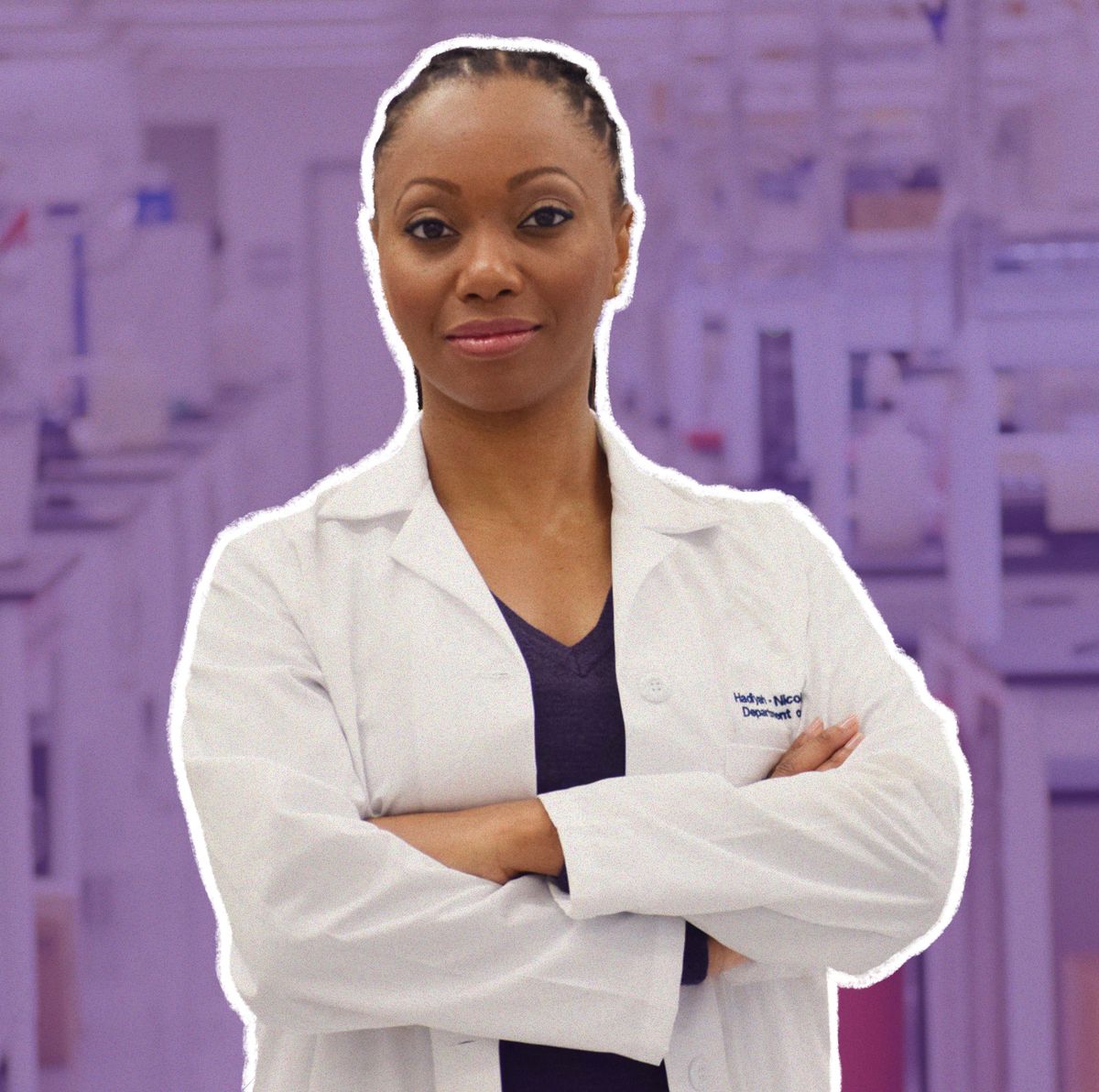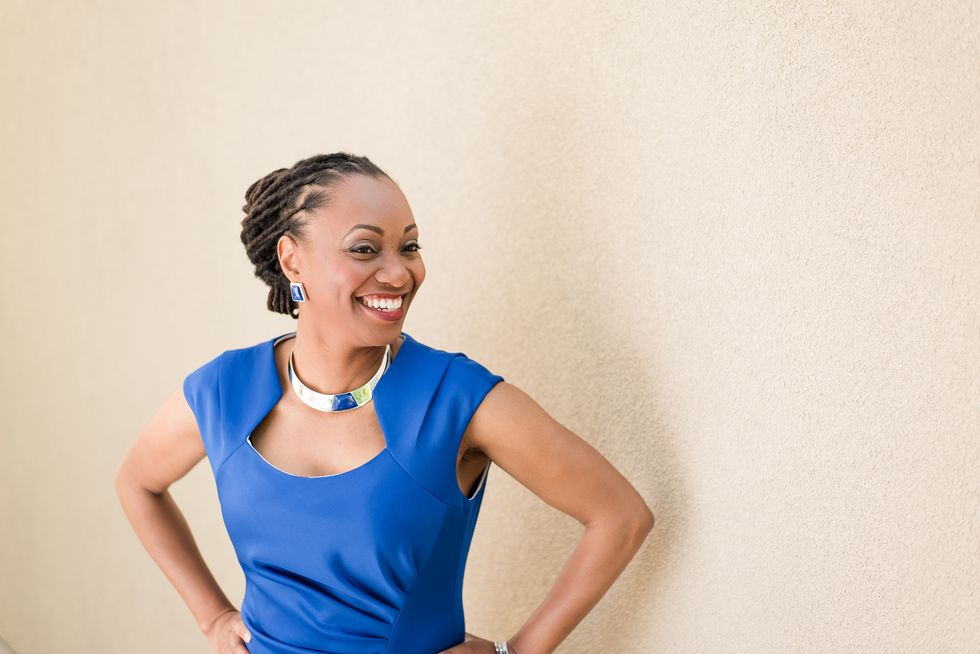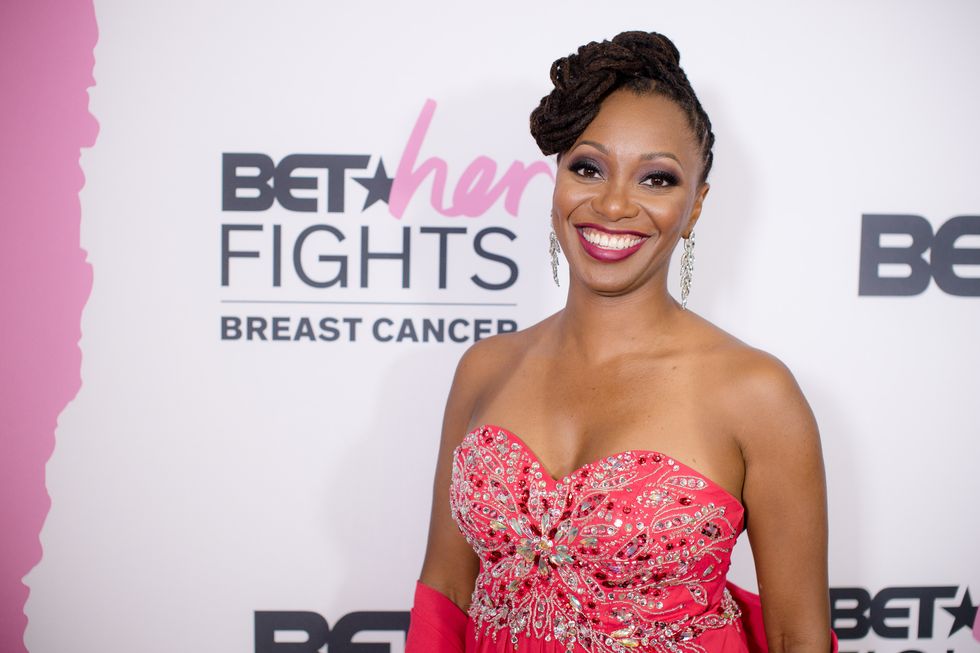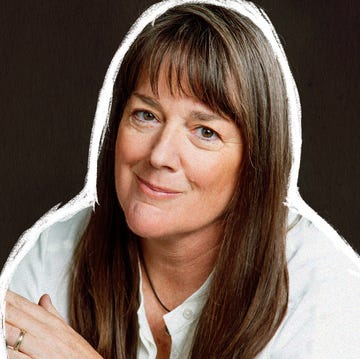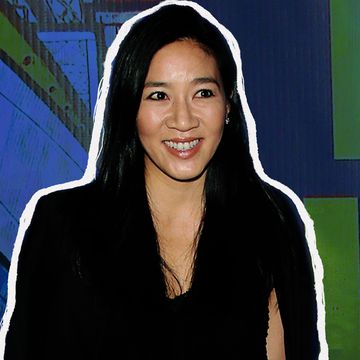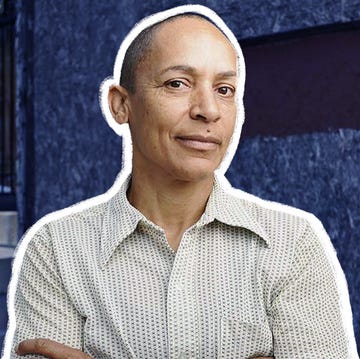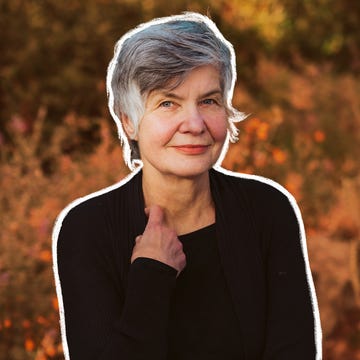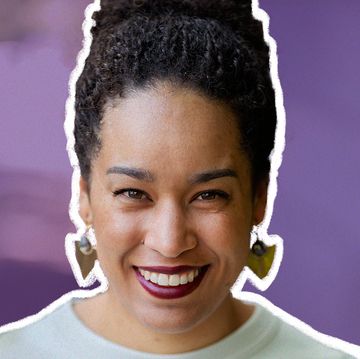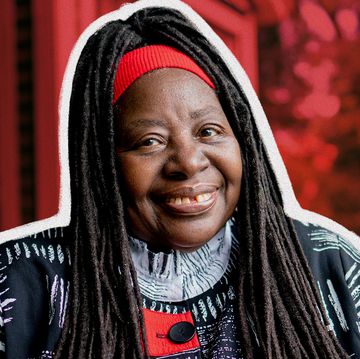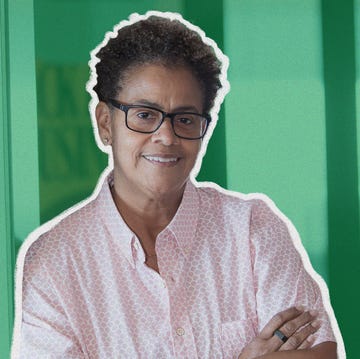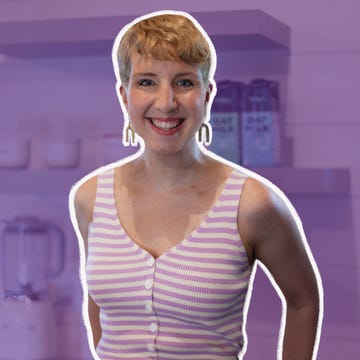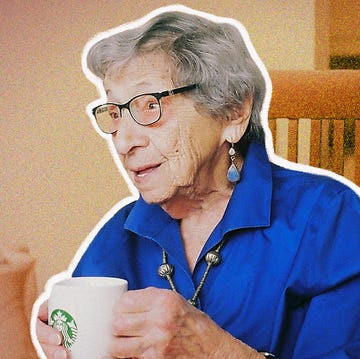In the ongoing Shondaland series Head Turners, we meet interesting women from every facet of life who are crushing it in their careers. From artists and tech mavens to titans of the boardroom, these women are breaking barriers, and they’ll share how you can too.
For Dr. Hadiyah-Nicole Green, cancer research is personal. She's lost several family members, including the aunt and uncle who raised her, to the disease. After seeing firsthand the toll that cancer and cancer treatment can take, she dedicated her life to finding a treatment that would revolutionize cancer care.
Green made headlines in 2016 when her laser technology cancer treatment proved to induce tumor regression in mice without side effects. She was awarded a $1 million grant from the Veterans Affairs Office of Research and Development to take her findings to clinical trials. In order to reach that next step — and keep the technology affordable — she needs $10 million, so she founded the Ora Lee Smith Cancer Research Foundation. The nonprofit is named for her late aunt and aims to make cancer treatments more accessible, affordable, and effective without causing more pain to the patient.
Because of her groundbreaking research and cancer-killing technology, Green was named one of Business Insider’s Top 30 Under 40 in health care in 2019. USA Today selected her as one of the 100 most inspiring women of the last 100 years alongside icons like Rosa Parks and Eleanor Roosevelt. She’s been recognized by The Root 100 and Ebony Power 100 and received the BET Her Breast Cancer Awareness Award in 2018.
Breast cancer is one of the several types of cancer that Green’s technology has been designed to treat. While breast cancer incidence rates among Black and white women are similar, according to the American Cancer Society and the Breast Cancer Research Foundation, Black women have a 41 percent higher death rate from breast cancer. For women under 50, the disparity is greater: The mortality rate among young Black women, who have a higher incidence of aggressive cancers, is double that of young white women. Green is on a mission to change that and similar statistics.
Born and raised in St. Louis, Green headed south after high school and attended Alabama A&M University, then went on to attend the University of Alabama at Birmingham for her graduate and doctoral studies in physics. Today, she’s an assistant professor at Morehouse School of Medicine.
Shondaland recently spoke with Green about her groundbreaking technology and her trailblazing career in the field of physics.
JAVACIA HARRIS BOWSER: When did you know you wanted to pursue a career in science?
DR. HADIYAH-NICOLE GREEN: Leaving high school, I thought I wanted to have a career in computer science, and I did a summer program at Xavier University before I started college. I realized that I didn’t like sitting in front of the computer all day, so I started my freshman year in college trying to figure out what I wanted to do. I went from computer science to electrical engineering to math.
A lady named Aisha Fields, who was working on her Ph.D. in physics at the time, saw me coming out of a calculus class my freshman year. She pulled me to the side and said, “You must be pretty smart if you’re taking calculus as a freshman.” She asked, “What do you want to do?” And I said, “I’m not sure. I’ve already changed my major three times, and I just got here!” Then she said, “If you’re good at math, why don’t you major in physics?”
I said everybody knows that physics is hard, but she — in that moment — changed my life. She told me just because physics is hard for other people doesn’t mean it’s going to be hard for me. She said not to let other people’s limitations define my reality. I ended up graduating with a 4.0 grade point average in physics as the first in my family to go to college.
JHB: What did you do after undergrad?
HNG: I was following in Aisha’s footsteps. I interned at NASA, and I was calibrating lasers for the International Space Station. I interned at the University of Rochester Institute of Optics. I was working on things to make the internet faster. I was planning a career of revolutionizing the way we receive cable and internet. Aisha went on to become the 50th African American woman to get a Ph.D. in physics, and I became number 76 when I got my Ph.D. in physics. All of that stems from that one conversation that day [when] I was trying to figure out what I wanted to do with my life.
JHB: Why did you shift gears and begin focusing on cancer research?
HNG: The day after I graduated from Alabama A&M University, my aunt who raised me announced that she had what she referred to as woman’s cancer and said that she would rather die than experience the side effects of chemo and radiation. I had the summer off, so I became her primary caregiver. The last three months of her life, I saw her go from being this strong, mighty, praying woman of God to somebody who couldn’t walk or talk. All she could do was moan and grunt. It was devastating.
Three months later, my uncle who raised me was diagnosed with cancer. The doctors gave him four to six months to live, even with chemo or radiation. I took time off school and was his primary caregiver as he lost 150 pounds, all of his hair, eyelashes, [and] eyebrows. He had uncontrollable diarrhea, and his skin looked like he had been barbecued.
Seeing the horrors of cancer and the horrors of cancer treatments, I just had this idea there has to be something better than this. At that time, I was 22 years old and dedicated my life to end the suffering of cancer patients and to develop a cancer treatment without the side effects.
JHB: How did you get the idea for your cancer-killing technology? Can you explain in layperson’s terms how it works?
HNG: The idea that I had was that if satellites in outer space could tell whether a dime on the ground is face up or face down, and a cell phone can call anywhere on the planet and target just one cell phone — even in a stadium full of people — then surely we should be able to treat cancer at the site of the tumor without all of these side effects.
We call it laser-activated nano therapy. This is a harmless nanoparticle. I took a laser that is so low power — lower power than the average laser pointer — so the laser by itself is also harmless. The laser is activating the nanoparticles by making the electrons in the nanoparticle vibrate so fast that they get hot. Coming in with a physics background, working with lasers and optics, taking the technology that makes satellites and cell phones work, I thought: Why don’t we just zap the target?
This simple way of heating these cancer cells up in a way that’s very local, specific, and targeted is the reason why we don’t have side effects. We inject the nanoparticles at the site of the tumor. We shine the laser at the tumor, and then the tumor shrinks and disappears. It’s so simple. It’s beautiful.
JHB: Where are you now in the development of this treatment?
HNG: The technology right now is sitting on the shelf collecting dust while I’m raising money and writing grants. It’s tragic because cancer charities raise over a billion dollars a year in the name of the hope of a cure and cancer awareness. Awareness and early detection, that saves lives. That’s important. But with a billion dollars a year being donated to cancer charities, and my nonprofit has struggled to raise $10 million to do a clinical trial for technology that’s already been proven and peer reviewed, you know there are some missing links here.
JHB: What advice would you give to other Black women working in STEM?
HNG: My advice for Black women in science: When it’s harder than it should be, don’t give up. We have a unique obligation to do the kinds of science that will benefit our community. And if we don’t fight for it, no one else will. If we’re not creating affordable health care for ourselves, no one else will. If we’re not taking ourselves into consideration when we design treatments for medical issues, no one else is doing that.
Javacia Harris Bowser is a Birmingham, Alabama-based writer and writing coach who has contributed to USA Today, Good Housekeeping, and Birmingham Times. Follow her on Twitter @seejavaciawrite.
Get Shondaland directly in your inbox: SUBSCRIBE TODAY
